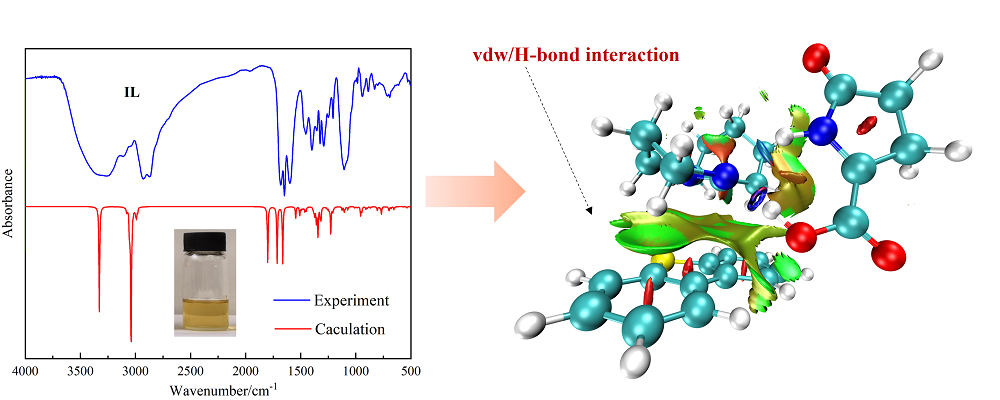Ionic liquids (ILs) [
13], a new class of green solvents, are molten salts that usually consist of large organic cations in combination with a vast variety of mainly inorganic anions. ILs have been the subject of much research and have become good substitutes for traditional volatile extractants due to their unique physical and chemical properties (non-volatility, high polarity, high chemical and high thermal stability, designability) [
14,
15]. Conventional quaternary ammonium salts, quaternary phosphonium salts, pyridine or imidazole (Im), pyrrolidone-based cations, and bis(trifluoromethylsulfonyl)imide ([NTf
2]
−), tetrachloroaluminate, tetrafluoroborate ([BF
4]
−), and hexafluorophosphate anions have been widely used in EDS processes [
16,
17]. For instance, Holbrey et al. [
18] found that the EDS efficiency of IL was mainly determined by the type of cation, and there was little direct effect of the anion. The cations were ranked as follows for this application: alkylpyridine ≥ pyridine ≈ imidazolium pyrrolium. Butt et al. [
19] also verified the positive effect of the cations; anions like [NTf
2]
− and BF
4− had only minor impact. [NTf
2]
−-based ILs were more efficient compared with other anions in the desulfurization process [
20,
21]. Li et al. synthesized a dual IL based on Im and pyridine [
22]. Under the best operating conditions (IL/oil mass ratio = 2:1, 30 °C, 30 min), the desulfurization efficiency reached 79.72%. Deep desulfurization was achieved after five cycles. Wang et al. synthesized and characterized several trialkylamine-based ILs [
23]. The removal efficiencies of thiophene, benzothiophene (BT), and dibenzothiophene (DBT) from a model oil by tris(3,6-dioxaheptyl) ammonium salicylate were 72.68%, 76.31%, and 83.94%, respectively, under the best conditions. Removal efficiency did not decrease significantly after five extraction cycles. Butt et al. [
24] found that EDS efficiency varied with
N-ethylene glycol chain length and
N-allyl or
N-benzyl substitution on imidazolium ILs.
1H NMR confirmed that π–π interaction between the benzimidazolium ions and DBT played a major role in the high efficiency.













